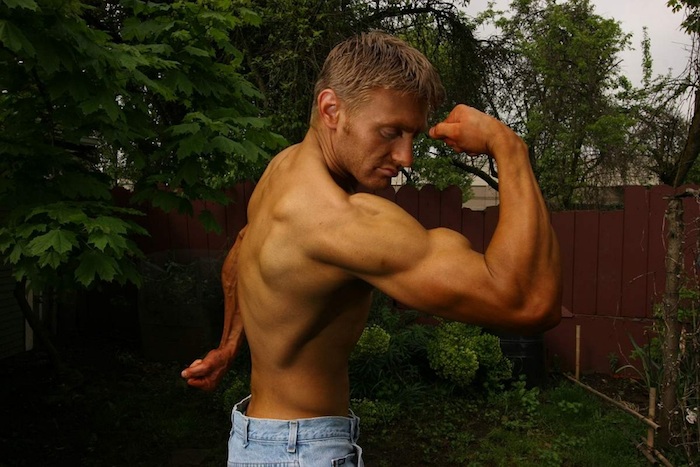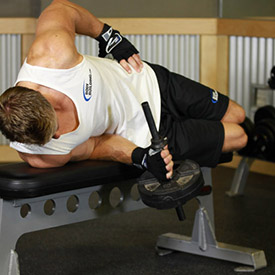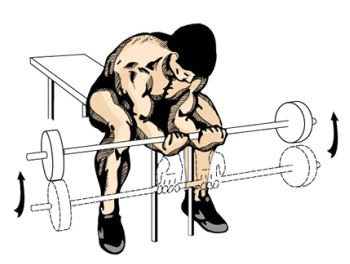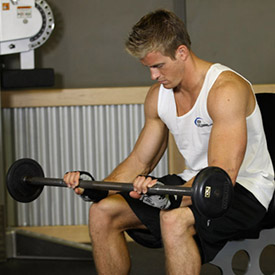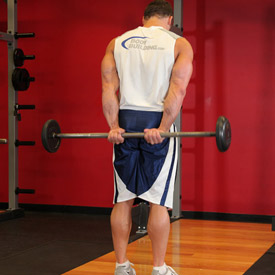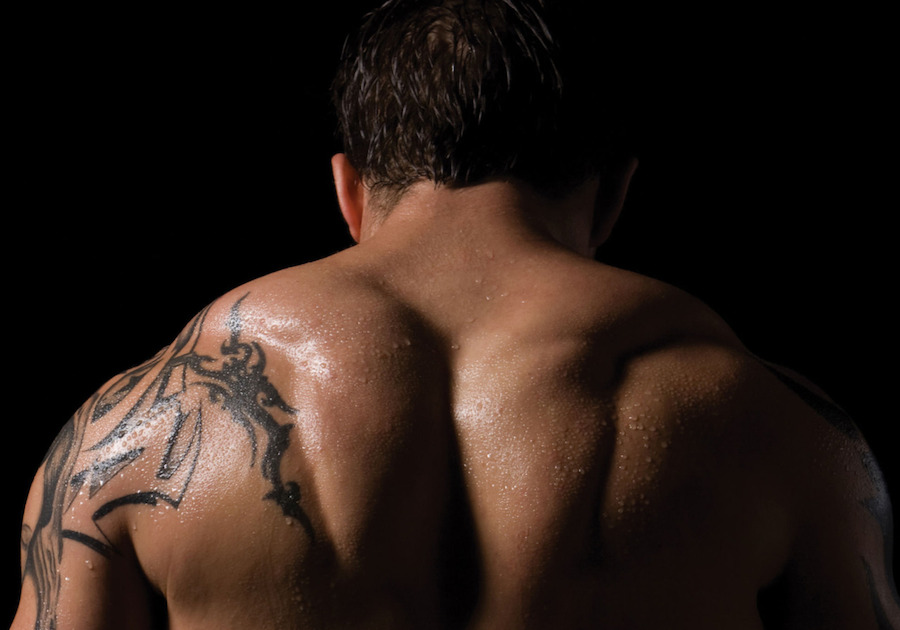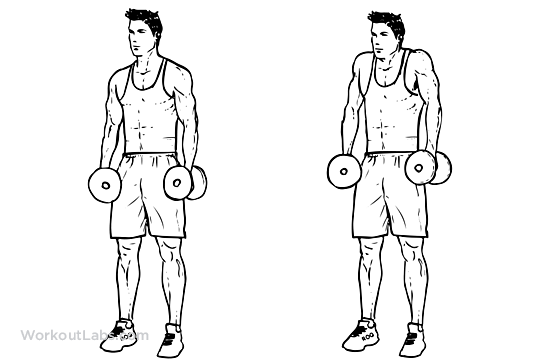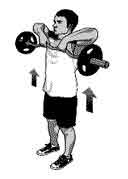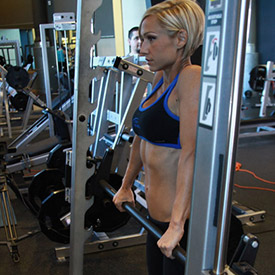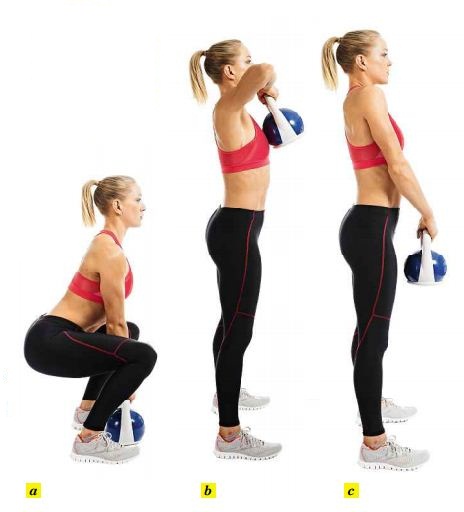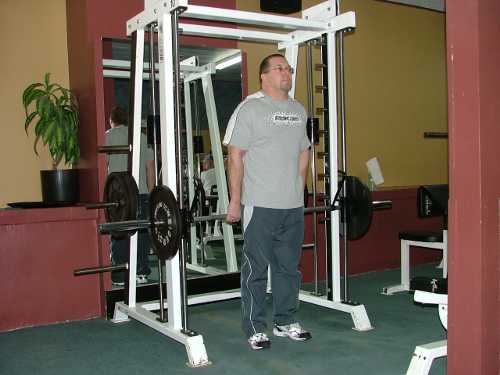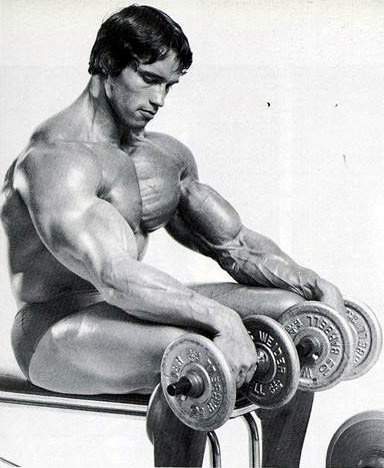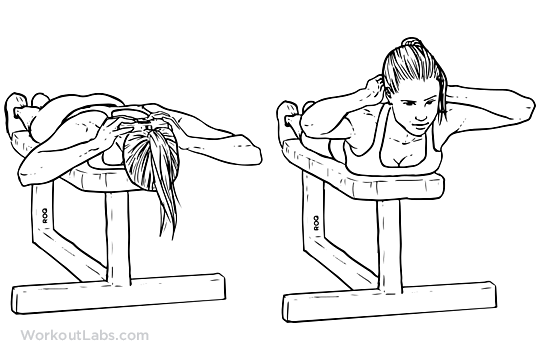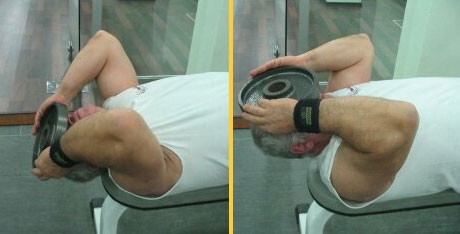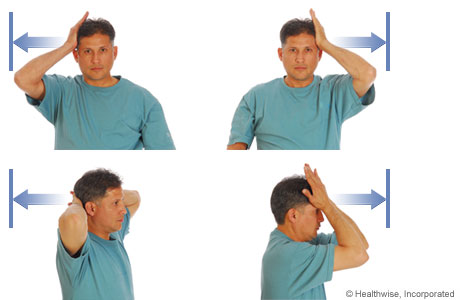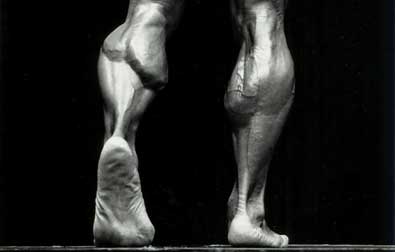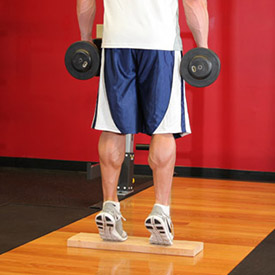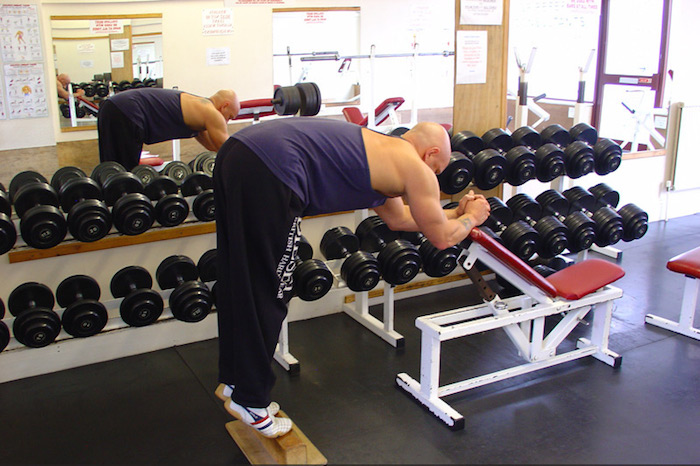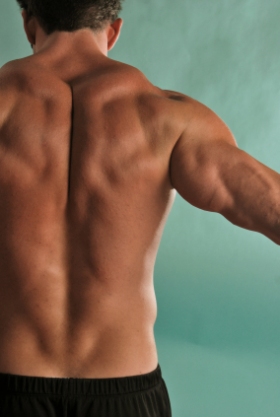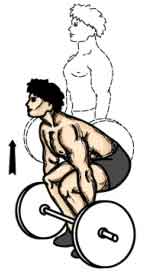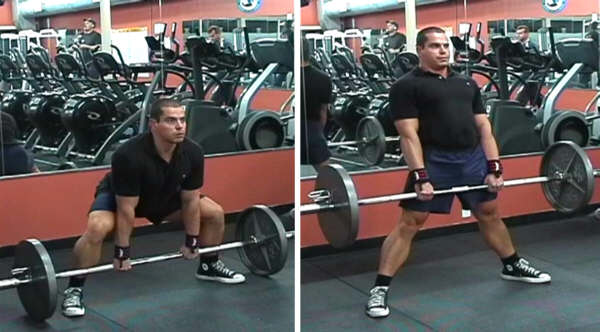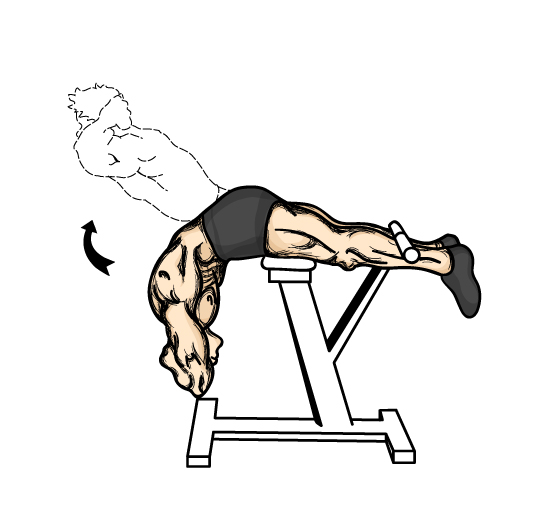Building a rock-hard chest, awesome abs, and solid triceps is good, but unfortunately, for many people there are some important muscles that end up forgotten. Small or big, these do make a difference, as working them is likely to give you an advantage: a more harmonious and aesthetic physique.
You should incorporate them into your routine, even if you have to remove some other exercises if you don’t have the time. (500 crunches everyday, anyone?)
Not only will you gain more strength and volume, training these muscles will also help the other muscles used during your workouts. So, if it’s free…why not have them?
Pick a part you are interested in, and let’s roll!
Forearms
Working your forearms will definitely give you more strength to, ahem… realize compound arm exercises (pull ups, push ups, etc…). Strengthening the forearm will also benefit the wrist articulations, much used during such exercises. You already work your forearms when you are doing pull ups or push ups; but having some exercises dedicated specifically to your forearms will make them stronger and bigger. With time, you will also deport the effort from your articulations to your muscles (when you are lifting heavy weights), so the strength you will gain will not only preserve your articulations, but also make you more efficient in certain exercises.
A- Dumbbell Lying Pronation
One of the most efficient exercise for kick-ass forearms. Lay down on a bench, on one side, and grab a weight. Solely relying on the strength of your wrist (the forearm must stay immobile), rotate your wrist, by bringing it in. Hold on for 1 to 2 seconds, then invert the rotation. There is no need to work with a super-heavy weight, as this could lead you to damage the rotators cuff (located in the shoulders).
Routine
Grab a weight that will allow you to realize around 10 reps, and incorporate this movement in the beginning of your session.
B- Farmer’s Walk
Grab a heavy weight on each side and walk as fast as you can.

Walk as fast as you can for 50 to 100 meters while firmly holding the weights. Make sure to breath, and focus on the muscle that is solicited. Try not to keep your arms “hanging” while solely using your legs- contrarily, you need to feel the pressure on your forearms.
Routine
Perform this exercise at the end of your session, with two minutes rest between a distance of 50 to 100 meters
C – Forearm Curl
Sit on a preacher curl bench. Using a heavy-enough weight, slowly try to curl the bar in towards your forearms. Beware not to use too heavy of a load as you could end up injuring your wrist articulations.
Routine
Do 3 sets of 5 to 10 repetitions. You can either perform this exercise at the beginning of your session, or at the end. If you find that the movement greatly solicits your forearms, have it at the end.
D- Reverse Wrist Curl
This is a variation of the previous exercise. Sit on a bench, and grab the bar with both hands, palms facing the floor. Only using your wrists, try to bring the weight up. Again, don’t use too-heavy of a weight, as you could hurt yourself. Proceed slowly, and focus on your forearm; DO NOT let the weight fall back uncontrollably.
Routine
Try to perform 3 sets of 5 to 10 repetitions. If your session contains many push ups and related movements, have this movement at the end of your session.
E- Barbell Shrug Behind The Back
Keeping your hands behind your back, grab a bar and try to curl it up. Do not use too-heavy of a load- because you lack visibility, you could easily injure yourself. Focus on your forearms, and keep the movement controlled from start to finish.
Routine
Try to perform 2 sets of 5 to 10 repetitions. You can have this exercise either at the beginning or at the end of your session.
2- Trapezius
This is a muscle many people don’t work much (including myself!), even though the trapezius give your back important volume. Training the upper part of your shoulders will give you a bigger shape that Hulk himself would be scared of. The trapezius possess great potential; while they are small at the beginning, you can pump them up through consistent training. Because this is a muscle that is not often solicited, you should definitely dedicate some exercises to this part of your back.
A- Dumbbell Shrugs
Classic yet kick-ass exercise. Grab a dumbbell on each side, and try to “reach” your shoulders to your ears. In order to properly complete this movement, your arms must stay straight, and your biceps should not be used to lift the weights. Focus on your traps, which must be the muscles that enable the movement: you should feel some tension there. Once your shoulders are up, slowly release them, in a controlled fashion.
Routine
Try to realize 5 sets of 6 to 9 repetitions. Make sure to warm-up a bit before if you decide to start your session with this exercise. You can also put it at the end.
B- Barbell Shrug
This is a variation, the movement here focuses on a greater portion of your shoulders. Lift up the barbell until your elbows reach your shoulders, and go back. Make sure your back remains straight and your posture stable; this is a requirement if you want to really solicit the traps-shoulders duo. Focus on the tension that must be present in your shoulders and traps, and do not balance the weight to make the movement easier. You only need to use the strength coming from your shoulders to lift the weight up.
Routine
Try to do 4 sets of 5 repetitions, in the middle of your session (after a proper warm-up if you haven’t yet worked your shoulders.)
C- Smith Machine Shrug
Another variation. Here, your movement will be guided by the Smith machine. Start with the bar around your thighs. Keeping your back straight, try to lift the bar, solely using your shoulders. Make sure to control the bar when you bring it back down.
Routine
Try to perform 3 sets of 7 repetitions, make sure to control your breathing and don’t perform the movement too fast.
D- Kettlebell Sumo Deadlift
A great exercise to improve your posture. Grab a kettlebell in a sumo position, and bring it up while squatting, continuing to raise it until you reach your shoulders. Because this requires great control, make sure to start with a light weight (between 4 to 9 pounds) to perfect the movement. This exercise contains three phases: first, your legs must be parallel to the floor; then control your back while going up; and finally once you are up, bring the kettlebell to the same level as your shoulders.
Routine
You can integrate this exercise either at the beginning or at the end of your session. Try to perform 2 sets of 10 repetitions. Make sure form is correct and avoid any movement that will help you bring the kettlebell up more easily. The first part of the movement should be performed through the strength of your quads; and the second from your shoulders.
E- Shrugs Behind the Back
This is a variation of shrugs, but the solicited parts are slightly different. Grab a bar behind your back, palms up. Keep your back straight, and try to bring the weight up, solely using your shoulders. Do not use your arms for the movement; focus on the tension you should feel in your shoulders, and control your breathing.
Routine
Perform this exercise at the beginning of your session, after a short warm up. Grab a light weight to start with, in order to avoid any injury, but also to make sure your form is correct. Try to perform 4 sets of 8 to 10 repetitions, with a small rest in-between sets.
3- Neck
Yup; your neck does have muscles: up to 25 muscles! These are needed to support your head for sure.
There are two portions, anterior and posterior. A big neck is paramount if you get big headed 🙂
The neck is definitely one of those body parts we never think about; but working your neck is part of building a great and impressive shape. Plus, you will be less prone to neck pains, because you will learn through practice not to leave your head hanging while working out.
A- Lying Face Down Plate Neck Resistance
Lay on a bench, head facing the floor, and put your hands behind your neck. Bring your head down, then bring it back up while exhaling. You should end up with your chin parallel to the floor. Maintain this position up to 3 seconds, and go back down, while inhaling. Beware not to overestimate your ability to perform this movement, go slowly to avoid injury.
Once you have mastered this exercise, you can add a weight on your height; which you will hold with your hands. Do not come up with some fancy form, and go slowly.
Routine
Either at the beginning or at the end of your session, try to perform 2 sets of 8 to 10 repetitions. After a couple of weeks, you should be able to add a weight to increase the tension.
B- Lying Face Up Plate Neck Resistance
This is a variation of the previous exercise. Here, you will perform the same movement, but the other way. In other words, try to bring your head up. Focus on your form, and go slowly. As I said before, do not overestimate your ability to perform this exercise, and do not use a weight the first time you practice it. Once you master the movement, you can add a weight to increase the difficulty.
Routine
Either at the beginning or at the end of your session, try to perform 2 sets of 8 to 10 repetitions, or one set lying face down and one set lying face up.
C- Isometric Exercise: Side
Great exercise to strengthen the lateral muscles. Stand straight and put a hand on the side of your head; slowly push with your hand, using your neck to counterbalance the force applied. Your neck must not move. Control your breathing by slowly inhaling and exhaling. Start with a low pressure, and gradually increase it. Once you worked one side, use the other hand to work the other side.
Routine
You can perform this exercise at the beginning or at the end of your session. Try to perform 3 sets of 20 seconds, for each side of your head.
D- Isometric Exercise: Front
This is the same movement as the previous exercise, but this time, apply the pressure on your forehead. Make sure not to move your neck while you are performing this exercise. Focus on your breathing while applying the pressure on your neck. With your hand on your forehead, you should feel the tension in your inner neck, and with your hand on the back of your head, you should feel the pressure around your traps.
Routine
You can perform this exercise at the beginning or at the end of your session. Try to perform 3 sets of 20 seconds each for both sides of your neck.
4- Calves
The mighty calves…big calves is something you don’t see much because calves are one of the hardest body part to grow. The reason is quite simple: they are solicited every time you walk. Calves work in a very efficient manner energy-wise, so increasing their volume is not easy at all. There is also one thing worth mentioning: calves act upon elastic strength, and not a muscle-based movement.
Finally, energy accumulates around the Achilles tendons, and this is the energy that gets liberated.
A- Calf Raises
Grab a board or a couple of books, and simply try to go as low as possible, then as high as possible, using solely your calves. Go down slowly, and try to reach the floor with your heels, while controlling your breathing. You can also grab some dumbbells or a weighted vest to make the move harder.
Performing this exercise without any support will also improve your balance.
Routine
This exercise can either be performed in the middle or end of your session. Try to perform 3 sets of 15 to 20 repetitions; but make sure to perform these slowly.
B- Donkey Calf Raises
This is a variation of the previous exercise. Bend forward at a 90° angle; and using a support (here I don’t recommend books at all since they could slip away, and you could really hurt your chin), try to bring your lower back up. In this exercise, your calves are solicited differently, this is then a complementary exercise to the previous one.
Routine
At the beginning of your session (after a short warm up) or at the end; try to perform 3 sets of 10 to 15 repetitions, making sure to go slowly.
5- Lower Back
Let’s close this topic with the lower back! This portion of the back often accumulates much tension, and working it would be useful to alleviate this tension by bringing it from your articulation to your muscles. Moreover, by working this zone, you will increase the blood flow in this area, which will help to shed the off stubborn fat you hate so much (assuming a caloric deficit).
Finally, by working your lower back, you’ll build a more harmonious shape.
A- Deadlift
Facing a barbell, go down to grab it by bending your legs until your shins slightly touch the bar. Once you have grabbed the bar with your hands in pronation, straighten your legs all while trying to go back to your initial position.
While going down, drive the movement simply by inverting the sequence (bend your back over, and then bend your legs). Make sure your form is correct, because it’s quite easy to injure yourself if you don’t watch out. Do no start with too-heavy of a weight until you master this movement, and make sure to exhale while going up.
Routine
You can put this exercise at the middle or at the end of your session. Try to perform 3 to 5 repetitions.
B- Sumo Deadlift
This is a variation that also works the lower portion of your lumbar. For this movement, there should be a greater distance between your legs. Your hands can either be in pronation or supination for this exercise. Focus on your breathing, and make sure your form is correct to avoid any injury.
Routine
You can perform this exercise either in the middle or at the end of your session. Try to perform 2 sets of 3 to 5 repetitions.
C- Hyperextensions
Amazing exercise! By using a bench or trestles at home, face the floor, and hold your feet under something. Your hands could either be crossed over your chest or behind your head. Try to go up, until your head goes slightly past your butt. Go back down slowly without releasing the tension. Control the movement to avoid any injury.
It is only when you master this movement that you can use some extra weights (plates or weighted vest).
Routine
At the end of your session, try to perform 3 sets of 10 repetitions.
I hope this post gave you some great ideas to boost yours gainz; if you have some other interesting exercises to suggest, please share!

